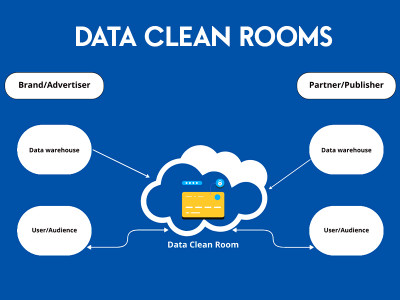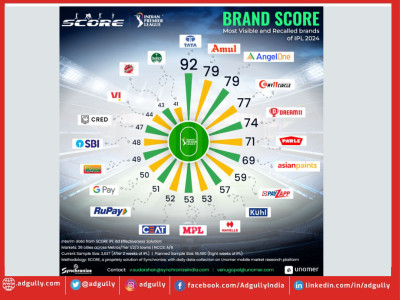Four golden rules for creating an effective Data Clean Room strategy
Data clean rooms (DCRs) are becoming an increasingly prominent topic in martech (marketing technology) conversations across the world. DCRs enable marketers to access and analyse data about customers without fragmenting privacy laws or exposing the information to unauthorised access. This is particularly significant with the implementation of strict privacy laws such as the GDPR and CCPA.
Marketers can use DCRs to analyse data from many sources, such as social media sites, without jeopardising individual consumers' privacy. For example, an organisation may wish to analyse the performance of a social media advertising campaign, but owing to privacy rules, they cannot directly access the user data. They may gather and analyse data in a secure environment using a DCR, without fear of breaking privacy rules.
Commenting on DCRs helping marketers address potential privacy hurdles, Taranjeet Kaur, Media & Digital Marketing - India, Tata Consumer Products, said, “The fact that we are nearing the time of third party cookie depreciation is why DCRs are entering martech conversations. Third-party cookies were the main mechanism for identifying individuals across different websites, targeting personalised ads and measuring the performance and attribution of the campaign. Many marketers today have or are adopting the CDP route to address the same. However, DCR is the next level to data management. In a CDP, you are focused on user-level data and IDs. With data clean rooms, the focus is on using anonymised first party data and information is in the form of cohorts and aggregated reports, hence it addresses the privacy issue. Google’s ADH is one such example, where two data owners, for example, a publisher and an advertiser, put their data into one neutral room and share it safely between one another.”
On whether Data Clean Rooms lead to more effective performance, Gaurav Anand, Chief Digital & Marketing Officer, L’Oréal India, said, “More and more marketing dollars are going to be chasing consumer data. In markets such as China we have seen more than 50% of marketing spend leveraging consumer data. In India, we already see DTC brands and e-retailers effectively using their consumer data for better conversions. At L’Oréal, we have also leveraged consumer data-led audiences, which have shown 1.5-2X improvement in key KPIs such as ROAS, Ad Recall and message association.”
Anand further added, “To enable consumer data-led marketing, every brand is in a race to collect consumer data. Data clean rooms can make this exercise collaborative and more meaningful. After all, consumers rarely buy just one brand or from one platform. Third party data clean rooms such as Liveramp can bring consumer data of two brands, which result in richer consumer data with more attributes for both brands to leverage. At L’Oréal, we have successfully explored this with retailers in Europe and we are exploring similar partnerships in India as well. Beyond third party data clean rooms, we also leverage partners such as Meta and Google, who help us with their multiple consumer attributes to enrich our own consumer data, which has shown better returns on our investments.”
Mudit Bhandari, Head - Digital Marketing, Grasim Industries (Paints), Aditya Birla Group, noted, “As a marketer in the digital era, data is something that is heavily relied on to build constructs for maximising returns on our marketing dollars, especially on Digital media. With the inevitable cookieless world shaping up rapidly and strongly, creation of a DCR is becoming critical for organisations, large and small, that utilise digital media to ensure advertising effectiveness can still be measured with high accuracy in a soon to be cookieless environment.”
As shared by Aditya Birla's Mudit Bhandari, 4 golden rules for creating an effective Data Clean Room strategy are
- Voluminous BUT relevant FPD: Advertisers should collect the minimum amount of data from customers that is required for their campaign functioning; sometimes less is more. Before collecting and using the said data, consent is a must.
- Trends & User Segmentation: Aggregate user information is made visible through the data clean rooms, providing insights into trends within demographic, industry, and user groups.
- Storage and Protection: All consumer data should be stored in a secure environment not connected with the rest of the company’s system. Access controls, encryption and intrusion detection systems are a must.
- Data Sharing: Limit data sharing to trusted partners who have signed data protection agreements and would adhere to the same data privacy protocols.
On the Don’ts for Data Clean Room Bhandari shared
- Heavy reliance on Cross Network Attribution: Despite claims from platforms to be able to address cross channel problems, hard to see how this would be a case given stringent policies of platforms like Google, Amazon, etc. One should use his sensibilities to take calculated calls and not blindly rely on said solutions
- Hoarding Data: Once data is no longer needed, it should be securely deleted/ wiped. Advertisers should define their data retention policy specifying what data needs to be kept and for how long
- Not updating your DCR Strat: It is of utmost importance that advertisers constantly monitor and assess their data clean room system to ensure its efficiency and relevance. One should constantly be updated on the data privacy regulations
Wavemaker in association with Adgully is launching a white paper on Data Clean Rooms(DCR). This report will be announced at Adgully's premire IP DIGIXX Summit and Awards (7th Edition) which will be held on 12th April at Westin Hotel, Gurugram. Watch this space for further details on White Paper Launch by Adgully & Wavemaker.


















Share
Facebook
YouTube
Tweet
Twitter
LinkedIn